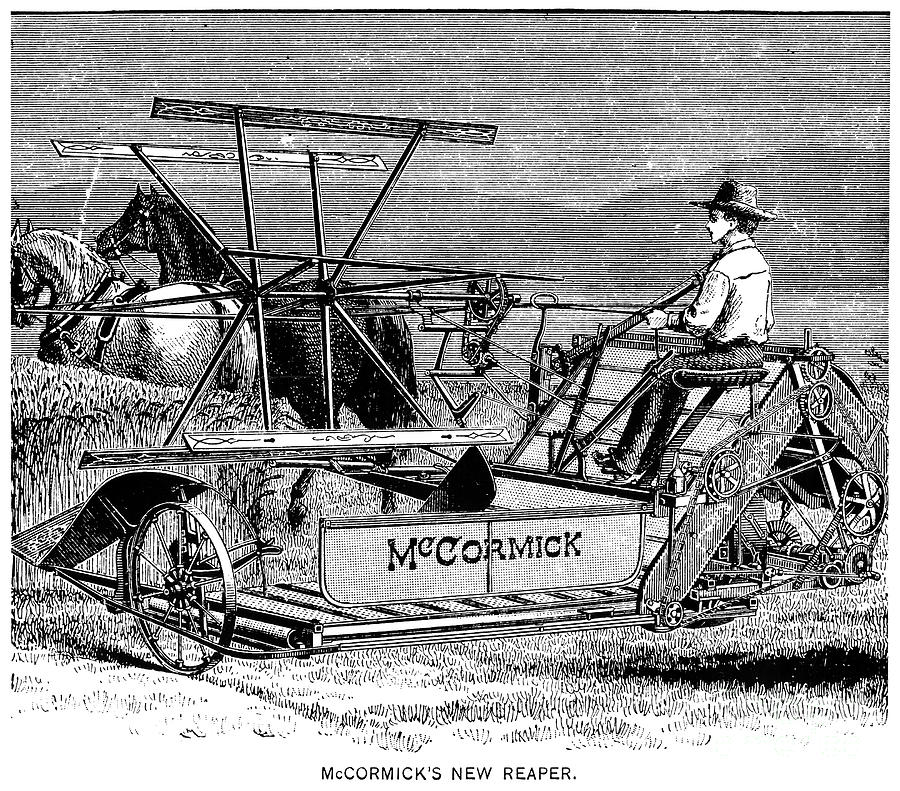

Only a few years later, however, McCormick proudly went through the tumult surrounding the Square, a meeting at which a bomb killed seven policemen. Used brutal tactics to defend nonunion workers from attacks by strikers as they left the plant on May 3, 1886, leading directly to the protest meeting the next night at As a result, the McCormick Works faced several major In the mid-1880s, as McCormick management tried both to gain closer control over the production processes and to wrestle with the impact of a severe national recession, labor unrest grew rapidly. In 1893, the Plano Company built a new factory in A second reaper company was organized to take over the old factory in Plano, but it too relocated to the Chicago area. The William Deering Company soon rivaled the leading McCormick Company, and the Deering factory on the North Branch of the Chicago River employed nearly as many workers as the McCormick plant on the South Branch. The following year and, after buying control of the company in 1878, moved it to Chicago in 1880. By 1880, with McCormick the largest agricultural machinery producer in Chicago, area employment reached nearly 7,000, a fifth of the national total.Ī few years earlier, William Deering, a retired merchant from Maine, had come to Plano, Illinois, to superintend another reaper factory his old friend William Gammon had purchased. At the same time the company management, much influenced by Nettie McCormick, refocused on building the business, and the company began to regain ground. Within two years the new McCormick Works replaced the old factory.
#MECHANICAL REAPER. FULL#
Within days Nettie Fowler McCormick, the young wife of 62-year-old Cyrus, was on the new site, where she ordered the resumption of full production. Put the whole future of the company into question when, on October 9, it destroyed the entire old factory. On January 25, 1871, Cyrus McCormick bought 130 acres on the South Branch of the Chicago River, where he hoped to build a new factory. As a result, McCormick had shrunk to a regional firm, selling principally in upper Midwest states. McCormick harvesters also technically lagged behind specialized self-rakes used for harvesting small grains. Its products were ill-suited to a shift among many farmers to combined machines that could efficiently harvest both grain and hay, the latter much in demand to feed the livestock in America's burgeoning cities. In 1860, his factory occupied 110,000 square feet of floor space and, with more than 300 workers, employed nearly a fifth of all wage earners in Chicago's agricultural implement sector.ĭuring the next decade employment in the sector grew quickly-the 1870 Census found nearly 4,000 working in agricultural machinery establishments-but the McCormick Company, though still the largest single employer in the Chicago implement industry, had stagnated. But the sharp financial panic of October 1857 destroyed or crippled many of McCormick's competitors. Wright, who made a self-rake reaper developed by Jearum Atkins. census reported 646 people working in the agricultural implement industry in Chicago.Ĭhicago soon attracted other machinery producers, including George Easterly of Heart Prairie, Wisconsin, who built a Chicago factory to produce his grain header, and John S. By 1850, with the McCormick factory in full operation, the U.S. The two immediately began construction of a factory to build the McCormick reaper. Of Chicago), bought three lots on the north bank of the

On August 30, 1847, McCormick, in partnership with Charles M. Link to the East about to be in place, offered the best location from which to build his McCormick also recognized that the future of American agriculture lay to the West and that Chicago, with the This approach had worked poorly, often producing inferior machines and always producing inferior financial results. Since developing the first successful reaper in 1831, McCormick had tried selling it through regional licensees who also manufactured the machine. In 1847, Cyrus McCormick decided to consolidate manufacture of his reaper in Chicago.


 0 kommentar(er)
0 kommentar(er)
